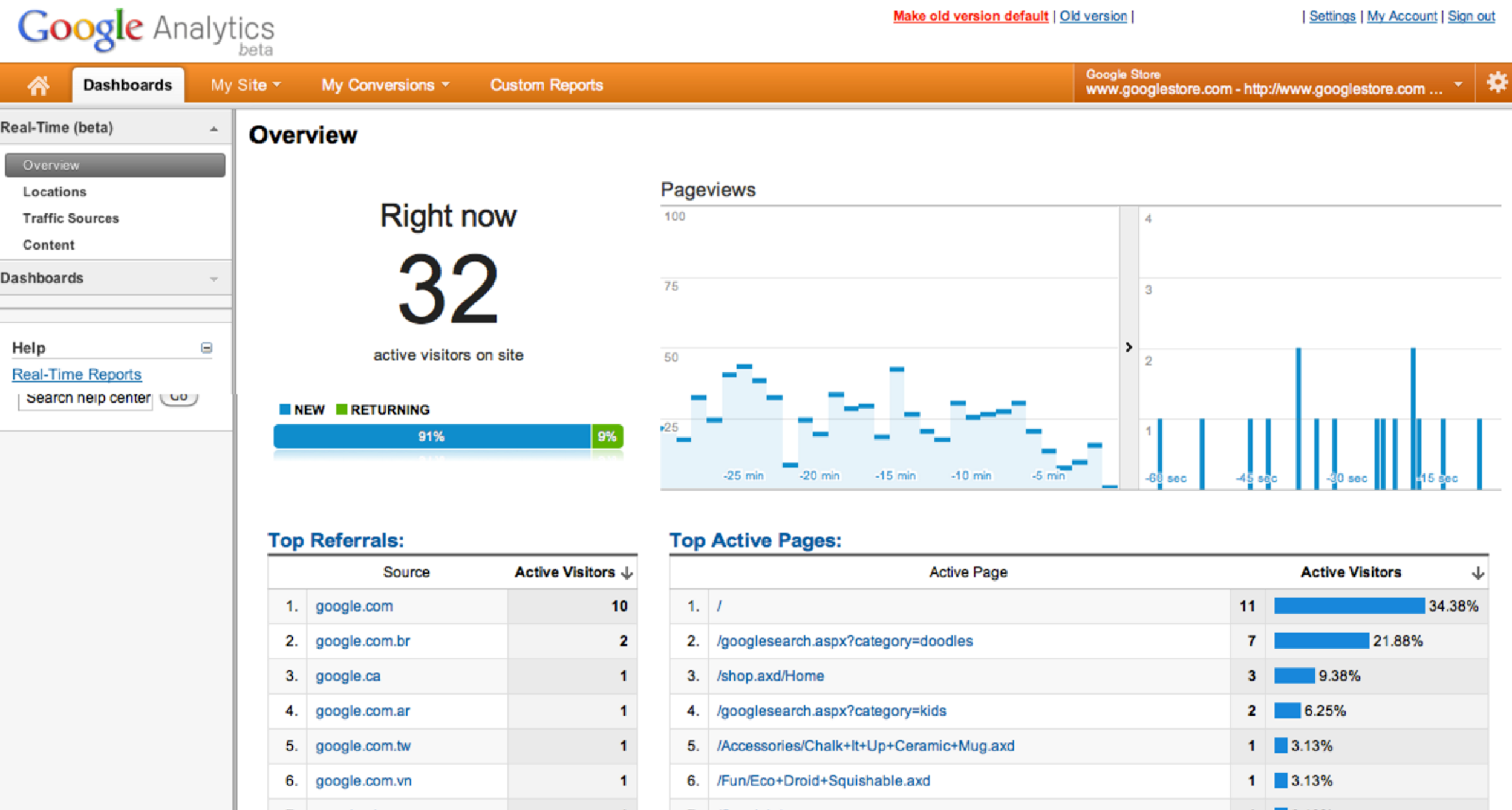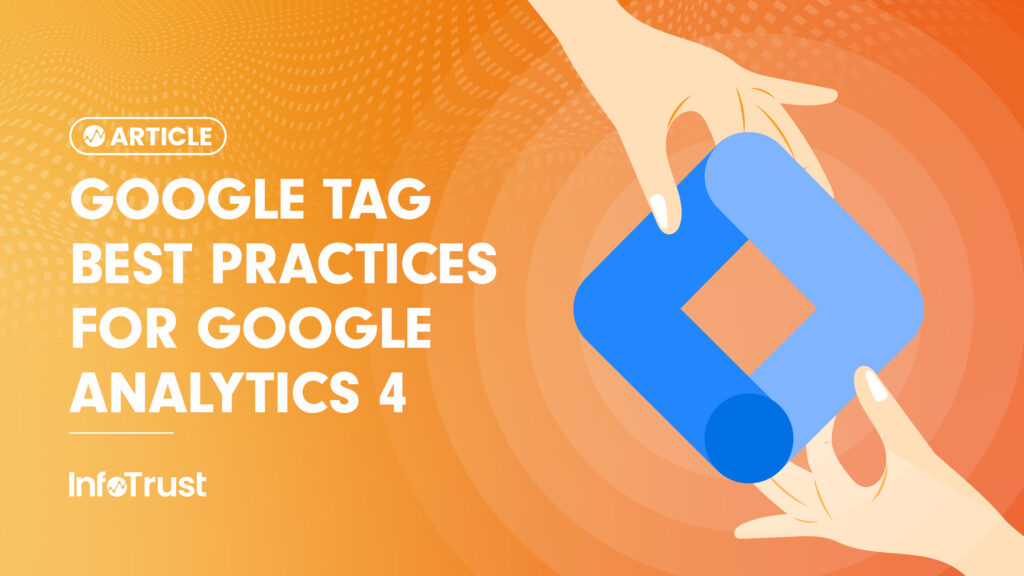On November 12, 2015, Google Analytics will be turning ten years old. In the industry where much can happen in one month, ten years is quite an anniversary. While everyone is looking ahead trying to figure out machine learning, predictive modeling and customer centricity, let’s take a look back at Google Analytics’ milestones on its path to becoming the most popular web analytics platform in the world.
Please keep in mind that this is not a thesis nor a historical account of everything that has happened. I did my best to research the timeline, but some dates might be a a bit off. To put it in GA terms, this is not a report with raw data, but rather a sampled synopsis that is directionally accurate. I hope you enjoy this review of the past 10 years.
April 2005 – Google Acquires Urchin
In April 2005, Google acquired Urchin Software Corporation, a San Diego, California, based web analytics company. At that time, Urchin tools were available as a hosted software service. According to Google’s press release, the goal was to make Urchin tools available to website owners and marketers to:
- Measure and increase return on advertising spend
- Make websites more effective
Fun fact: You may have used “UTM” tracking parameters before for your marketing channels. Did you know “UTM” stands for Urchin Tracking Module? Now you know!
November 2005 – Google Analytics is Born
A few months after acquiring Urchin, Google releases Google Analytics. The most fascinating part: 100,000 accounts were created within the first week of the Google Analytics release. However, due to extremely high demand for the service, new sign-ups were suspended only a week later. To better manage their capacity, Google began sending out batches of invitation codes for new analytics users to sign up. Only since August 2006 has the service has been fully available to all users.
October 2008 – Major Enterprise-Level Upgrades Announced
After almost a year of collecting business requirements from industry practitioners as well as web analytics experts, a new suite of reports is unveiled by Avinash Kaushik at the eMetrics Summit in Washington DC. (In a similar fashion, almost 4 years later, Google will announce the launch of Google Tag Manager at the eMetrics Summit in Boston. I was actually at that event.)
A major upgrade in 2008 included the following functionality:
- Advanced segmentation
- Custom reports
- Data export API
- Updated account management dashboard (it has recently been updated again)
- Integrated reporting with AdSense

October 2009 – More Power, More Flexibility, More Intelligence
These newly announced capabilities made Google Analytics more powerful giving users additional features to customize reporting and always stay informed:
- More engagement goal types
- Mobile application tracking
- Flexible reporting with custom variables
- Analytics intelligence and custom alerts
March 2011 – Google Analytics 5
In the Spring of 2011, at the annual Google Analytics User Conference, Google announced a number of GA changes that became known as “Google Analytics 5.” This release incorporated common requests from the users such as ability to view multiple advanced segments without needing to also use All Visits and create multiple dashboards. Additionally, a number of new capabilities were announced:
- Ability to set events as goals
- Reports displaying frequency of returned visitors
- More powerful custom reports with built-in filters
September 2011 – Google Analytics Premium is Launched
Here is the first Google Analytics Premium promo video:
In order to build a solution that meets the needs of enterprises, Google has worked with a number of organizations including Gucci, Travelocity, TransUnion, eHarmony and others, to ensure that the newly launched solution had met their needs. As a Google Analytics Premium Authorized Reseller, we work with a number of enterprises who rely on Google Analytics Premium to make their day-to-day business decisions. The key factors that differentiate Google Analytics vs. Google Analytics Premium today are:
- Extra processing power – Increased data collection, more custom dimensions and downloadable, unsampled reports
- Integrations with other Google products – DoubleClick for Publishers, DoubleClick Campaign Manager, Doubleclick Bid Manager, Doubleclick Search and BigQuery
- Advanced Data-Driven attribution modeling tools
- SLA for data freshness and processing
September 2011 – Real-Time Reporting
Do you want to know how many visitors are on your website right now as a result of an online marketing campaign? Google aimed to answer this with the Real-Time reporting release. Real-time reporting doesn’t just allow you to see what is happening on the site right now, but it lets you test your campaigns to ensure that they will be properly recorded in GA once launched.

July 2012 – New Era of Remarketing
With new remarketing features, Google Analytics became a marketing platform and not just an analytics tool. New remarketing features allowed users to create segments in Google Analytics and automatically remarket to them through the Google Display Network in Adwords.

October 2012 – Introducing Google Tag Manager
As mentioned before, in October 2012 at the eMetrics Summit in Boston, Google released Google Tag Manager. It is a free tag management solution that consolidates all website and mobile application tags with a single snippet of code and lets users manage tag deployment from a web interface.
September 2013 – Goodbye Keywords
This was a very sad time for many Google Analytics users. As all Google.com searches become encrypted using HTTPS, organic keyword data is no longer available in Google Analytics (and other analytics tools as well). Everyone begins to see “(not provided)” show up in their GA keyword reports.
April 2014 – Universal Analytics; From Sessions to Users

One of the main changes that Universal Analytics offered is the capability to bring data across devices into Google Analytics with the Measurement Protocol. As early adopters of Universal Analytics, we put the new features to good use.
Here is the case study that Google published about our work with Beckfield College to roll out Universal Analytics to drive higher conversions at a lower CPA including the use of Remarketing and Audience Reporting.
May 2014 – Enhanced Ecommerce is Ready to Track Your Sales
Ecommerce analytics is no longer just about tracking revenue and purchases. Analytics has to answer questions about consumer shopping experience such as what products were added or removed from their shopping cart, at what stage of the checkout did people drop off and what product lists drive the most engagement.
The Enhanced Ecommerce suite of reports offered all these reporting capabilities and more:
- Pre-purchase consumer shopping activity and engagement
- Shopping and behavior funnels including abandonment rates
- On-site promotion tracking
- More standard product attributes
May 2014 – Google Strengthens its Attribution Portfolio With Adometry
Attribution has always been one of of the most popular topics in analytics – what marketing channels impacted conversions and how should credit be assigned. Google Analytics and Google Analytics Premium always had attribution features and the ability to build custom models. However, last year Google made a very significant investment in this area of analytics by buying Adometry, a leader in attribution measurement. You can learn more here about the acquisition.
March 2015 – Mobile App Analytics – New Frontier
It is too early to outline a complete list of changes that came out in 2015. Google might still have some more features up their sleeve. However, there have been a few developments to highlight:
- Remarketing lists for search ads
- Mobile app analytics enhancements with cohort analysis + lifetime value measurement
- Various API improvements and updates, as described in the GA changelog resource
This basically brings us to today. Ten years flew by and I am sure thousands of marketers around the world are excited about the next ten years and what they will bring.
In your comments, perhaps you can share your wildest ideas for what Google Analytics should track, measure and report, and we can challenge the Google Analytics team to bring them to life.
For now, Happy 10th Birthday Google Analytics!











